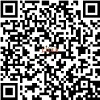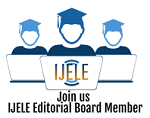*corresponding author
AbstractEvaluating textbooks to ensure their efficacy and consistency with the course objectives is imperative as they are considered as pivotal components in English language teaching. The present study was an attempt to analyze and evaluate a local Iranian ELT book series taught at the adult department of Iran Language Institute (the ILI). In doing so, 60 English language teachers teaching English at the ILI for at least three years were invited to check their opinions on each item of the Nativized Checklist to Evaluate General English Course Books in Iran developed by Shatery and Azargoon (2012) who adapted and validated Joshua Mickley’s Checklist (2005) for the Iranian context. The design of the study was descriptive, and the data obtained were subjected to descriptive statistics to determine the frequency and percentage of the participants’ responses. The findings revealed that, generally speaking, the participants held a negative standpoint toward the content of the books. It was concluded the books need thorough modification and change. More elements of communicative language teaching need to be implemented and incorporated into the books and they need to get closer and closer to the real-world needs of the learners. Besides, more cultural elements should be provided to reinforce the learners’ cultural awareness and understanding of the target language. The findings have implications for materials developers, syllabus designers and language teachers.
KeywordsELT textbook evaluation; materials evaluation checklist; communicative language teaching; cultural awareness; Iran Language Institute
|
DOIhttps://doi.org/10.31763/ijele.v4i2.767 |
Article metrics10.31763/ijele.v4i2.767 Abstract views : 1936 | PDF views : 659 |
Cite |
Full Text Download Download
|
References
[1] B. Lee, “EFL Learners’ Perspectives on ELT Materials Evaluation Relative to Learning Styles,†RELC J., vol. 46, no. 2, pp. 147–163, Aug. 2015, doi: 10.1177/0033688214564177.
[2] M. Zohrabi, H. Sabouri, and R. Behroozian, “An Evaluation of Merits and Demerits of Iranian First Year High School English Textbook,†English Lang. Teach., vol. 5, no. 8, pp. 14–22, Jun. 2012, doi: 10.5539/elt.v5n8p14.
[3] B. Jamalvandi, “ELT textbook evaluation in Iran, new insights,†Eur. Online J. Nat. Soc. Sci., vol. 3, no. 4, pp. 1068–1078, 2014. Available at: Google Scholar
[4] L. Moghtadi, “Iranian high school EFL textbooks: Why they should be modified,†Int. J. Lang. Learn. Appl. Linguist. World, vol. 5, no. 2, pp. 53–69, 2014. Available at: Google Scholar
[5] B. Tomlinson and H. Masuhara, The complete guide to the theory and practice of materials development for language learning. New York: John Wiley & Sons, 2017. Available at: Google Books
[6] M. Aliakbari and B. Jamalvandi, “Realization of culture in English textbooks in Chinese high school level,†Pan-Pacific Assoc. Appl. Linguist., vol. 16, no. 2, pp. 10–89, 2012. Available at: Google Scholar
[7] A. Bruton, “In what ways do we want EFL coursebooks to differ?,†System, vol. 25, no. 2, pp. 275–284, Jun. 1997, doi: 10.1016/S0346-251X(97)00014-6.
[8] W. M. Rivers, Teaching foreign language skills. New York: University of Chicago Press, 2018. Available at: Google Books
[9] A. Skierso, “Textbook selection and evaluation,†in Teaching English as a second or foreign language, vol. 2, 1991, pp. 432–453. Available at: Google Scholar
[10] B. Tomlinson, “Materials development,†in The Cambridge Guide to Teaching English to Speakers of Other Languages, Cambridge University Press, 2001, pp. 66–71.doi: 10.1017/CBO9780511667206.010
[11] P. Ur, “Grammar teaching: Research, theory, and practice,†in Handbook of research in second language teaching and learning, Routledge, 2011, pp. 507–522. Available at: Google Scholar
[12] H. Ansary and E. Babaii, “Universal characteristics of EFL/ESL textbooks: A step towards systematic textbook evaluation,†Internet TESL J., vol. 8, no. 2, pp. 1–9, 2002. Available at: Google Scholar
[13] M. Cortazzi and L. Jin, Cultural mirrors: Materials and methods in the EFL classroom. Cambridge University Press, 1999. Available at: Google Scholar
[14] J. C. Richards and W. A. Renandya, Methodology in Language Teaching. Cambridge University Press, 2002. doi: 10.1017/CBO9780511667190
[15] A. Cunningsworth, Choosing your coursebook. Macmillan, 1995. Available at: Google Scholar
[16] T. Hutchinson and E. Torres, “The textbook as agent of change,†ELT J., vol. 48, no. 4, pp. 315–328, Oct. 1994, doi: 10.1093/elt/48.4.315.
[17] O. S. Skliar, “Gender representations and gender bias in ELT textbooks published in the Middle East: A case study of ELT textbooks published in Turkey and Iran.†Middle East Technical University, 2007. Available at: Google Scholar
[18] J. C. Richards and T. S. Rodgers, Approaches and Methods in Language Teaching. Cambridge University Press, 2001.doi: 10.1017/CBO9780511667305
[19] E. Amalsaleh, “The representation of social actors in the EFL textbooks in Iran,†Unpublished doctoral dissertation, Shiraz University, Shiraz. 2004. Available at: Google Scholar
[20] M. Amini and P. Birjandi, “Gender Bias in the Iranian High School EFL Textbooks,†English Lang. Teach., vol. 5, no. 2, pp. 134–147, Jan. 2012, doi: 10.5539/elt.v5n2p134.
[21] J. Clarke and M. Clarke, “Stereotyping in TESOL materials,†Cult. Lang. classroom. ELT Doc., vol. 132, pp. 31–44, 1990. Available at: Google Scholar
[22] I. Kızılaslan, “Student teachers’ perceptions of gendered texts in English language textbooks,†Procedia - Soc. Behav. Sci., vol. 2, no. 2, pp. 3528–3531, 2010, doi: 10.1016/j.sbspro.2010.03.546.
[23] A. Jahangard, “Evaluation of EFL materials taught at Iranian public high schools,†vol. 9, no. 2. 2007. Available at: Google Scholar
[24] P. Ur, A course in English language teaching. Cambridge University Press, 2012.doi: 10.1017/9781009024518
[25] N. Grant, Making the most of your textbook, vol. 11, no. 8. Longman London, 1987. Available at: Google Books
[26] L. E. Sheldon, “Evaluating ELT textbooks and materials,†ELT J., vol. 42, no. 4, pp. 237–246, Oct. 1988, doi: 10.1093/elt/42.4.237.
[27] H. Shatery and M. Azargoon, “Designing and developing a native checklist to evaluate general English course books in Iran and comparing it with other existing checklists in the world,†Retrieved on January, vol. 6, p. 2018, 2012. Available at: Google Scholar
[28] J. Mickley, A. Nazari, and S. Park, “CS-450-2: The Mach Operating System Fall 2005 Doug Hill Liza Hill.†2005. Available at: Google Scholar
[29] C. Engin Demir, “Evaluation of the EFL textbook" New Bridge to Success 3" from the perspectives of students and teachers.†Middle East Technical University, 2006. Available at: Google Scholar
[30] M. A. Guilani, M. S. M. Yasin, and T. K. Hua, “Authenticity of Iranian English Textbooks for Schools,†English Lang. Lit. Stud., vol. 1, no. 2, pp. 25–30, Nov. 2011, doi: 10.5539/ells.v1n2p25.
[31] L. Yarmohammadi, “The evaluation of pre-university textbooks,†Newsl. Iran. Acad. Sci., vol. 18, no. 4, pp. 70–87, 2002. Available at: Google Scholar
[32] A. Riazi and A. Aryashokouh, “Lexis in English Textbooks in Iran: Analysis of Exercises and Proposals for Consciousness-Raising Activities,†J. Pan-Pacific Assoc. Appl. Linguist., vol. 11, no. 1, pp. 17–34, 2007. Available at: Google Scholar
[33] A. Azizifar, M. Koosha, and A. R. Lotfi, “An analytical evaluation of Iranian high school ELT textbooks from 1970 to the present,†Procedia - Soc. Behav. Sci., vol. 3, pp. 36–44, 2010, doi: 10.1016/j.sbspro.2010.07.010.
[34] A. M. Riazi and N. Mosalanejad, “Evaluation of Learning Objectives in Iranian High-School and Pre-University English Textbooks Using Bloom’s Taxonomy,†TESL-EJ, vol. 13, no. 4, pp. 1–16, 2010. Available at: Google Scholar
Refbacks
- There are currently no refbacks.
Copyright (c) 2022 Nasrin Sedaghatgoftar

This work is licensed under a Creative Commons Attribution-ShareAlike 4.0 International License.

International Journal of Education and Learning
ISSNÂ 2684-9240
Published by Association for Scientific Computing Electronics and Engineering (ASCEE)
W : http://pubs2.ascee.org/index.php/ijele
E : zalik@ascee.org

This work is licensed under a Creative Commons Attribution-ShareAlike 4.0 International License.





















